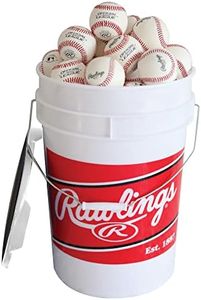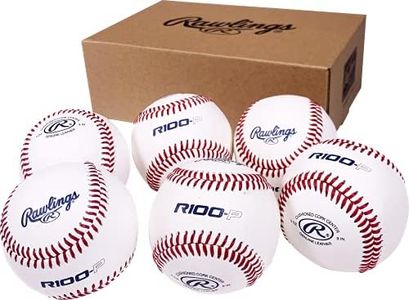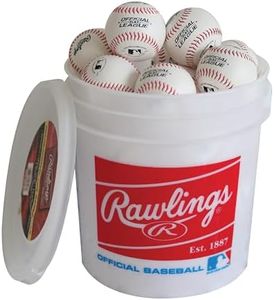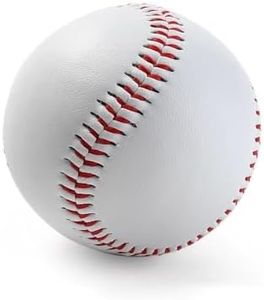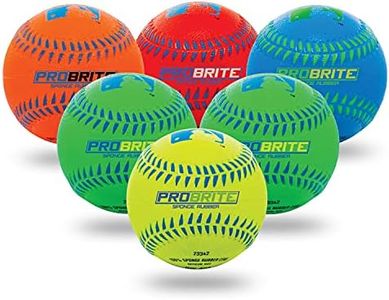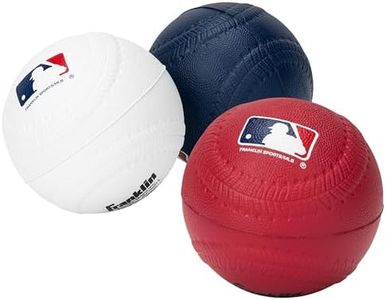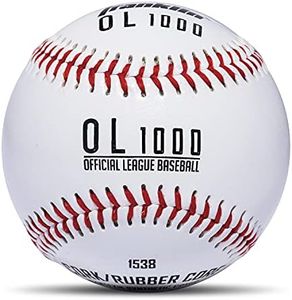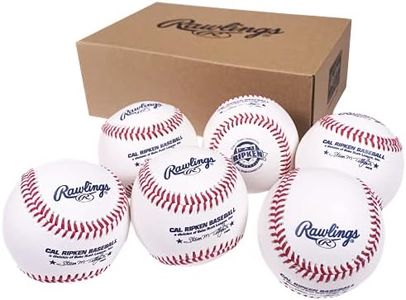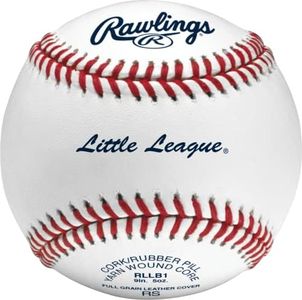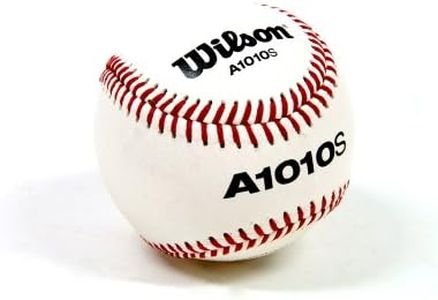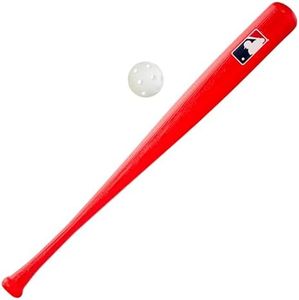We Use CookiesWe use cookies to enhance the security, performance,
functionality and for analytical and promotional activities. By continuing to browse this site you
are agreeing to our privacy policy
10 Best baseballs
From leading brands and best sellers available on the web.Buying Guide for the Best baseballs
Choosing the right baseball can make a real difference in your playing experience, whether you're practicing, playing in a league, or just having fun with friends. The right baseball matches your skill level, age, and the type of game you're playing. Before buying, consider where and how you'll use the ball, as this will guide you toward the best fit for your needs.Construction MaterialBaseballs are usually made with a core (often cork, rubber, or a combination), wrapped in yarn, and covered with leather or synthetic material. The material affects how the ball feels and performs. Leather covers are standard for official games because they offer great grip and durability, while synthetic covers are more affordable and weather-resistant, making them a good choice for practice or younger players. When choosing, consider if you're playing official games (leather) or mostly practicing and playing recreationally (synthetic).
Seam TypeThe seams on a baseball are the stitches that hold the cover together, and they affect how the ball moves through the air and how easy it is to grip. Raised seams are more pronounced and easier to grip, helping beginners learn proper pitching techniques, while lower or flat seams are more common in professional balls, providing less air resistance and a more predictable flight. Think about your skill level: if you're learning or playing casually, raised seams might help, but if you're participating in advanced leagues, look for flat seams.
Size and WeightMost standard baseballs are about 9 inches in circumference and weigh around 5 ounces, which is what you'll find in most official games. However, for younger players or specific training drills, slightly smaller or lighter balls may be available. Make your choice based on your age group and league requirements; kids often start with lighter balls, while adults and older teens use standard size and weight.
Core TypeThe core of the baseball, sometimes called the 'pill,' is typically made of cork, rubber, or a mix. This affects the ball's bounce and how far it can be hit. Cork cores tend to create a livelier ball, favored in competitive settings, while rubber cores are softer and are often used for youth or safety balls. Think about safety and performance: go for rubber or softer cores if playing with beginners or kids, and choose cork for traditional play and performance.
Level/UseSome baseballs are marked as practice, training, or game balls. Practice balls are often more affordable and built to withstand heavy use, but might not perform the same as game balls. Game balls are constructed to official standards and are best for league play. Training balls may be softer or have unique features to help with skill development. Match the ball's intended use to your routine: get practice balls for everyday drills and official game balls for competitions or league play.

